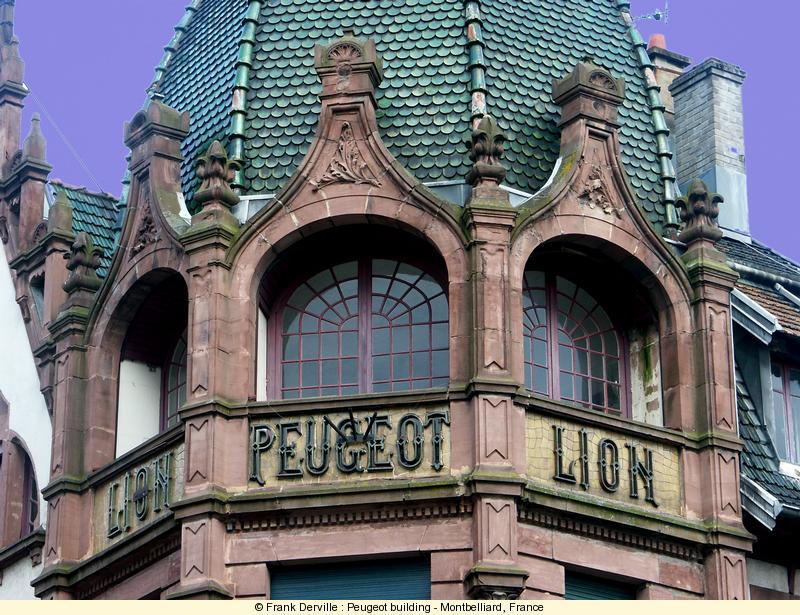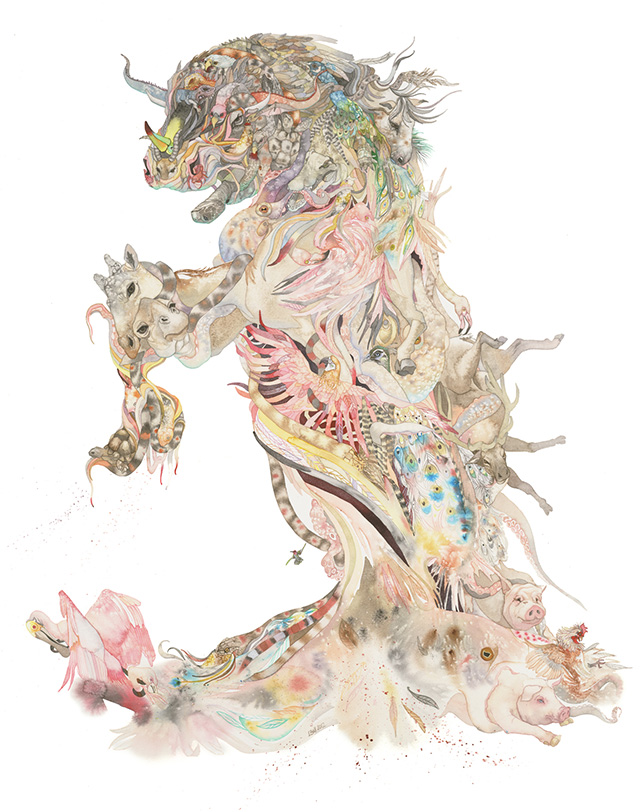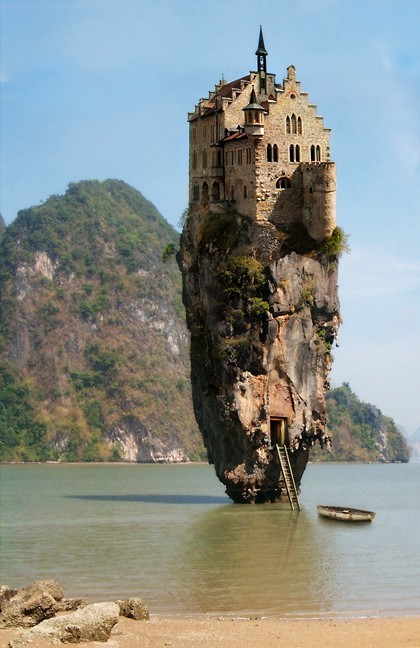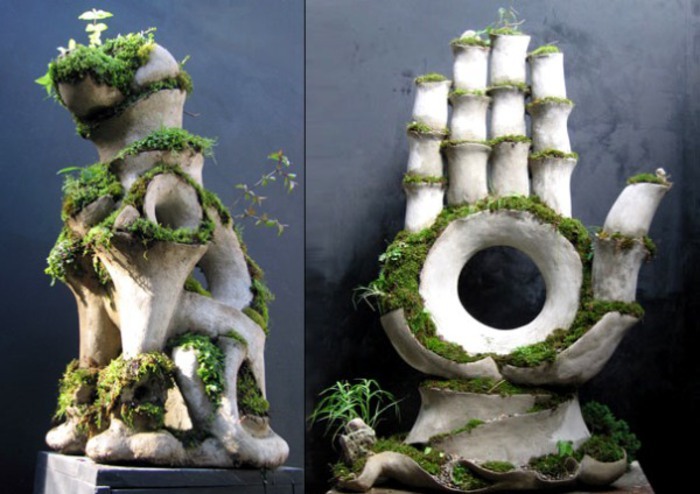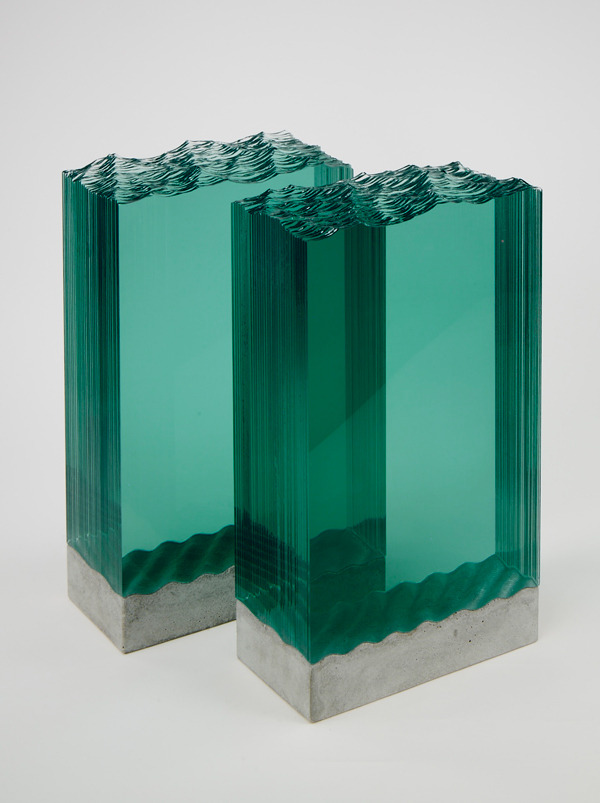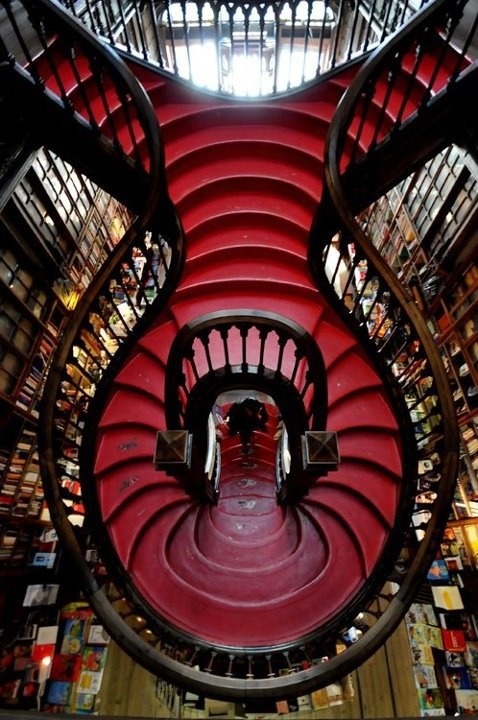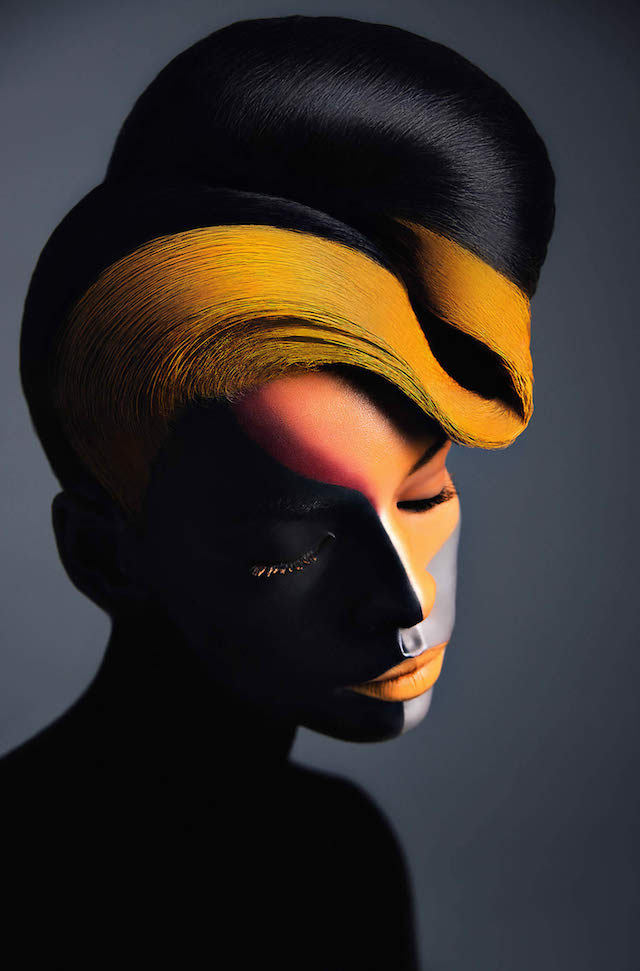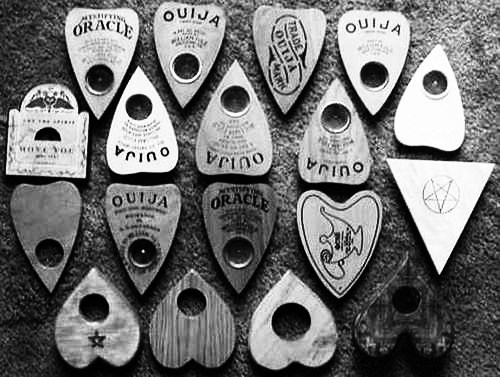Wednesday, December 3, 2014
Tuesday, December 2, 2014
Body Wrap
For my sculpture utilizing the human form, I chose to base it on the poem "Because I Could Not Stop For Death" by Emily Dickinson.
I became inspired by the acceptance of death and the idea of a welcoming figure instead of a looming evil presence, Through the sculpture I intended to make a kindly personification of death. To portray this I set upon making a dapper figure, giving him a vest, a button up shirt, and slacks. Rather than a cowl or veil, I opted for a cow skull with an omega carved onto his forehead, symbolizing the last link of the poem. The colors within the garment are muted, except the flowers. The poppy flowers are significant as they symbolize eternal rest.
- Because I could not stop for Death
- He kindly stopped for me
- The Carriage held but just Ourselves
- And Immortality. We slowly drove – He knew no haste
- And I had put away
- My labor and my leisure too,
- For His Civility We passed the School, where Children strove
- At Recess – in the Ring –
- We passed the Fields of Gazing Grain –
- We passed the Setting Sun – Or rather – He passed us –
- The Dews drew quivering and chill –
- For only Gossamer, my Gown –
- My Tippet – only Tulle – We paused before a House that seemed
- A Swelling of the Ground –
- The Roof was scarcely visible –
- The Cornice – in the Ground – Since then – ‘tis Centuries – and yet
- Feels shorter than the Day
- I first surmised the Horses’ Heads
- Were toward Eternity –
I became inspired by the acceptance of death and the idea of a welcoming figure instead of a looming evil presence, Through the sculpture I intended to make a kindly personification of death. To portray this I set upon making a dapper figure, giving him a vest, a button up shirt, and slacks. Rather than a cowl or veil, I opted for a cow skull with an omega carved onto his forehead, symbolizing the last link of the poem. The colors within the garment are muted, except the flowers. The poppy flowers are significant as they symbolize eternal rest.
Sunday, November 23, 2014
Paper Stacking: Art Nouveau
In this paper stacking assignment I chose to base this sculpture around something I love: art nouveau. The beautiful style of art nouveau is lovely in its fluid and organic motion and its repeating patterns and structures. To recreate the stylized prints of artists such as Alphonse Mucha in a three dimensional style, I attempted to recreate my own take on a mucha poster through a shadow box. By stacking paper, the transitions between the varying layer heights within the work helped to create a sense of depth within a relatively flat space. This stayed true to the flat surfaces and focus of line work within art nouveau and created emphasis to different pieces of the work.
Saturday, November 22, 2014
Paper Stacking: Fruit
In this sculpture I sought to replicate a lemon in paper. Referencing a real lemon, I attempted to duplicate its shape and structure by cutting out shapes in the paper. I then stacked the pieces to resemble the lemon, gluing them in place with wood glue. I finished the piece by sanding it down to make the layers uniform but still visible resulting in the final piece below.
Soap Carving Changes
In this project, I was assigned to take one of the sheep I had carved, and sacrifice it by making 4 additive changes and 4 subtractive changes. These changes would culminate into a form vastly different from the sudsy sheep I had began with.
 |
| You cannot grasp the true final form of the sheep! |
Change 1: Box Cutter.
For this change, I sliced off the legs of my dear rejected sheep, and slit off the head from its damaged torso and body. I then reopened a wound in its torso and removed the metal that had been keeping the body whole.
Change 2: Sandpaper
In this stage I sanded down all the rough edges of feet and the bottom of the head. The upper and lower of its body I sanded to be more rounded rectangular forms and removed some of the fur detail carved into the former sheep.
Change 3: Hammer
With a few hardy blows I smashed the head and feet into shattered fragments of its former self until they became unrecognizable in what they previously had been. The soapy meat lumps remained unharmed among the carnage.
Change 4: Screwdriver
Into the remaining parts I began to drill many holes along the surface of each block. Each entry point varied and many overlapped one another.
Change 5: Skewer
Utilizing the holes I had just drilled, I stacked the two pieces of blue cheese on top of each other on the skewer, before securing it on the stick with hot glue.
Change 6: Tea Bags
Emptying out the contents of two cherry flavoured tea bags into a plastic baggie, I proceeded to fill up the bags with the smashed remains of the head and feet. These were also sealed with hot glue at the top.
Change 7: Balsa Wood
To support itself and stand upright, I began constructing a two layer base made of two slabs of balsa wood with a hole drilled in the middle. The skewer was placed in the center of the balsa wood and sealed with hot glue.
Change 8: Red Paint
The tea bags and the meat were recolored red on their exteriors, leaving only the blue showing inside the former torso. The tea bags look like bloody garbage bags in this stage.
Change 9: Gold Paint
The base of the structure and the skewer support are painted gold at this point.
Change 10: Headphone Chord
Here I took a broken pair of headphones and cut a portion of the wire. I then tied the ends around the two teabags, and tied the center around the skewer. Making a notch of hot glue in the middle of the skewer, I ensured the bags would not slip down on the structure, then painted the chord gold.
Friday, November 21, 2014
Soap Carvings
For this project I was assigned to carve two soap carvings of a small animal figurine. For my figurine, I chose this tiny sheep with three eyes. The first carving is the white, while the second carving is the blue. Out of the two of them, the first carving turned out to be the more proportional one
 |
| Hakuna Matata |
Sunday, October 19, 2014
Fictitious Dishes
Based off of the short story "The Veldt" by Ray Bradbury, I wanted to bring in both the mechanical nature behind the nursery through the utensils and through the cup, but also the fantasies of the nursery through the place mat. I wove together two separate place mats made from .5x11" strips of paper, to simulate the grasslands described in the story. I also noted the work referencing "the white of bone" and desired to make bone one of the more prominent aspects of the piece. Among two bones shaped in a traditional manner, there is also a finger shaped bone lying in the bowl as well. The bowl itself is also formed to resemble that of the top of the cranium. Because of the twist at the end of the story, and the ambiguity of what the lions are feasting on, the meat in the setting has no plate, and is intentionally vague in shape. While it somewhat resembles a steak, it is hard to place exactly what it might be, other than some form of meat. Its coloration is also more purple than the plump red of a juicy tenderloin, making it look somewhat diseased rather than an appetizing treat.
Memento
For my memento I selected using skewers, masking tape, and brown ink. In this sculpture I desired to portray a memory from my childhood. At a young age I was introduced to a museum and found a great obsession with a mummified child on display. There were bars blocking me from reaching out to his form, but i was intrigued by this ancient thing that was clearly older than me but still retained the appearance of my own age at that time. Through this sculpture I attempted to portray my interest in the mummy, my inability to touch him, and the cramped space that defined both the mummy's resting spot and the area he was displayed in. The lion inside the box symbolizes that interest which eventually led me to pursue an education in the college across from where the mummy was located.
Wednesday, September 24, 2014
Relief Architecture
For my project on relief architecture, i chose to combine Rococo and Art Nouveau architecture. For the primary build of the sculpture I chose to make it out of foam board for a sturdy but lightweight build, and bind it in masking tape to make the individual pieces look uniform. To give the illusion of windows, i ran packaging tape along the frame of the sculpture to make it transparent. A small piece of balsa wood was used for decorative purposes, and a white string was utilized for a design in the core window of the piece. Finally, a piece of large art paper was painted in black in and cut into the silhouette of a woman before being put towards the back of the piece. by doing this, the piece gained more contrast and created a better sense of depth.
Monday, September 8, 2014
Wednesday, September 3, 2014
Subscribe to:
Posts (Atom)




































